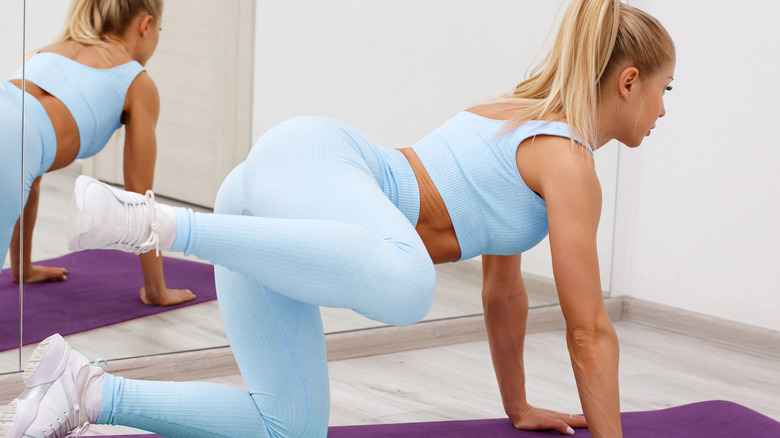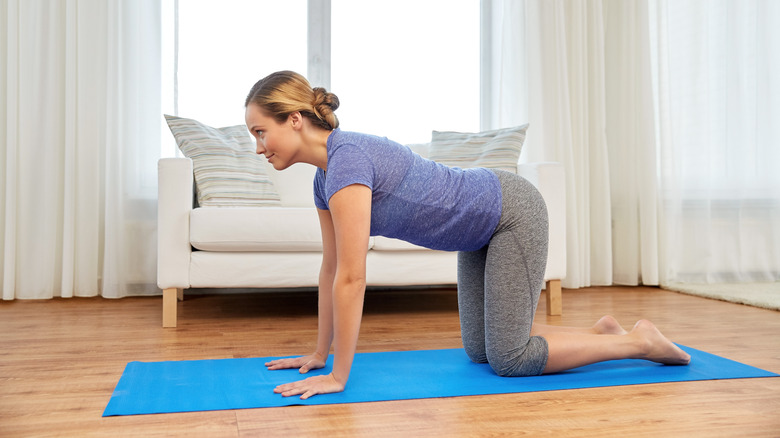Why The Fire Hydrant Exercise Should Be Part Of Your Routine
Who would've thought a urinating dog could inspire a good workout? The fire hydrant, which is a beginner exercise, doesn't require equipment and helps strengthen your core and glutes (via Livestrong). Specifically, it targets the gluteus maximus, gluteus medius, deep core muscles of the abdomen, and stabilizers located in the spine. Because it strengthens these critical areas, it can also help reduce your risk of injury to your back, hips, and lower body.
Abs and glutes are the two most important factors for protecting your back, according to Shape. This is because these three muscle groups often work together. For instance, strength training moves that target the glutes subsequently strengthen the core. Many of these exercises, when performed correctly, can help strengthen your back.
Once you master the fire hydrant, you can try more challenging variations that require the use of different muscles. But first, let's review the basics of this popular exercise.
How to perfect the fire hydrant exercise
First, you'll want to move to the floor on your hands and knees. A mat can provide an additional layer of support. Next, you'll want to ensure proper form. Your knees and feet should be aligned and hip-width apart (via Livestrong). Check to make sure your hands are directly below your shoulders, and your fingers are pointing forward. Also, your knees should be directly below your hips. Keep your back in a neutral position and your abs engaged. Imagine pulling your belly button toward your spine.
Now you're ready to go. Lift one leg up and parallel to the floor, maintaining a bent knee and aiming to reach hip height (or as high as you can go). All reps should be performed on one side before switching to the other leg. Women's Health recommends starting with 15 reps on each side for a total of three sets. Then you'll be on your way to strengthened glutes and core muscles.


